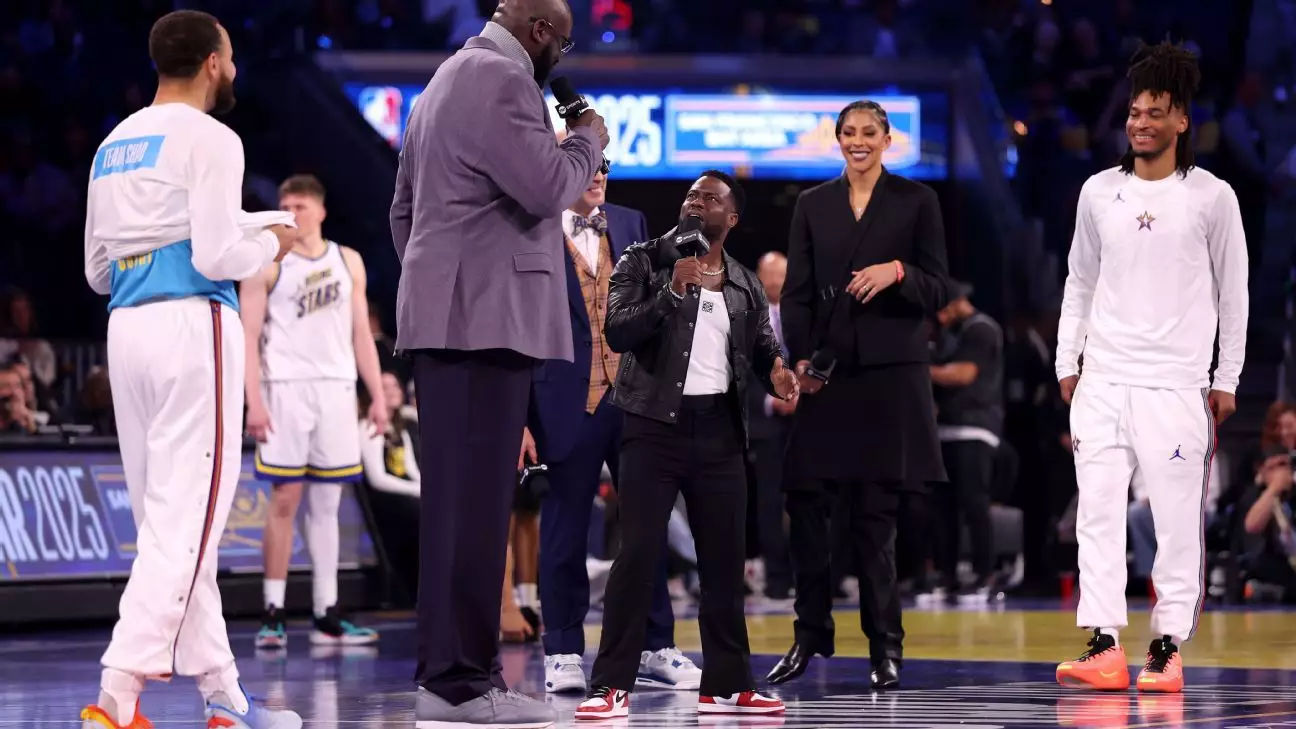The NBA All-Star Game is an annual showcase of talent and entertainment that has consistently captivated basketball fans. However, in a groundbreaking turn of events, the league opted for a new tournament format during the most recent weekend, which generated a swirl of mixed opinions from players and spectators alike. Traditionally, the game has featured a straightforward East vs. West matchup, but this year’s introduction of a four-team, single-elimination format marked a significant departure from that classic structure. Matched against a target score of 40 for each round, this innovative change aimed to inject excitement into the All-Star festivities, but it revealed underlying challenges that required addressing.
Player Sentiments: Evaluating the Experience
Despite the anticipation surrounding the revamped format, players found themselves divided over certain aspects of the game. The enthusiasm for on-court performances was palpable, yet numerous athletes voiced their frustrations regarding the frequent interruptions throughout the tournament. With comedian Kevin Hart providing commentary and humor during play, the balance between entertainment and a flowing game was disrupted. Trae Young, representing Chuck’s Global Stars, articulated the sentiments of several players when he expressed his discontent with the extended breaks, suggesting that they were unnecessary and detracted from the intensity of the competition. Is the purpose of the All-Star Game to entertain or to showcase basketball prowess? Perhaps both can coexist, but finding that equilibrium proved more challenging than anticipated.
As the tournament unfolded, it became apparent that team dynamics played a crucial role in determining success. The championship match witnessed the seasoned squad, Shaq’s OGs, triumphing over Chuck’s Global Stars in a contest that ultimately reflected the experience of its participants. Stars like Stephen Curry, Jayson Tatum, and Kevin Durant, all with considerable accolades, propelled Shaq’s team to victory, overshadowing the international talents of Chuck’s squad. Such a showdown raised questions about the rhythm of play when talented players were forced to contend with disruptive breaks. The championship round was marred by a lengthy tribute to the TNT broadcasting team, contributing to a near 20-minute pause before play resumed. If competitive spirit is the goal, can interruptions like these really foster the level of intensity expected from an All-Star Game?
Some players, while enjoying the unique format, offered valuable suggestions for refining future All-Star events. Shai Gilgeous-Alexander emphasized the need for a balance between competitiveness and entertainment, hinting that the organization should continuously explore avenues for improvement. “I feel like it was a little bit more towards the competitive side tonight, which is a good feeling,” he noted, but he urged decision-makers to consider how to further engage talent without sacrificing the flow of the game. Jaylen Brown echoed the sentiment, stating that halting play negatively impacted physicality, essential for a game that prides itself on talent and skill.
Moreover, figures like Draymond Green raised pertinent concerns regarding including first- and second-year players in such high-stakes competition, believing that it undermined the efforts of established stars who worked tirelessly to earn their All-Star spot. The absence of marquee players like LeBron James and Giannis Antetokounmpo also cast a shadow over the event, emphasizing the need for careful thought in selecting participants in future games.
The recent All-Star Game attempted to redefine an iconic event, marking a bold venture into new territory. The initial enthusiasm for innovation was met with valuable critiques from the players who participated. Insights gathered from this year’s tournament suggest a pressing need for iterative development and feedback. If the NBA wants to enhance the allure of its All-Star Game, it must find that delicate balance between entertainment and an authentic game spirit—one that players and fans can both appreciate. Moving forward, the continued input from athletes, combined with focused refinements to the format, might equip the league with the necessary tools for success in captivating both basketball devotees and casual viewers alike.
Ultimately, the All-Star Game is not merely a display of talent but a celebration of the sport, and ensuring it remains a thrilling spectacle should remain at the forefront of the league’s mission.


Leave a Reply